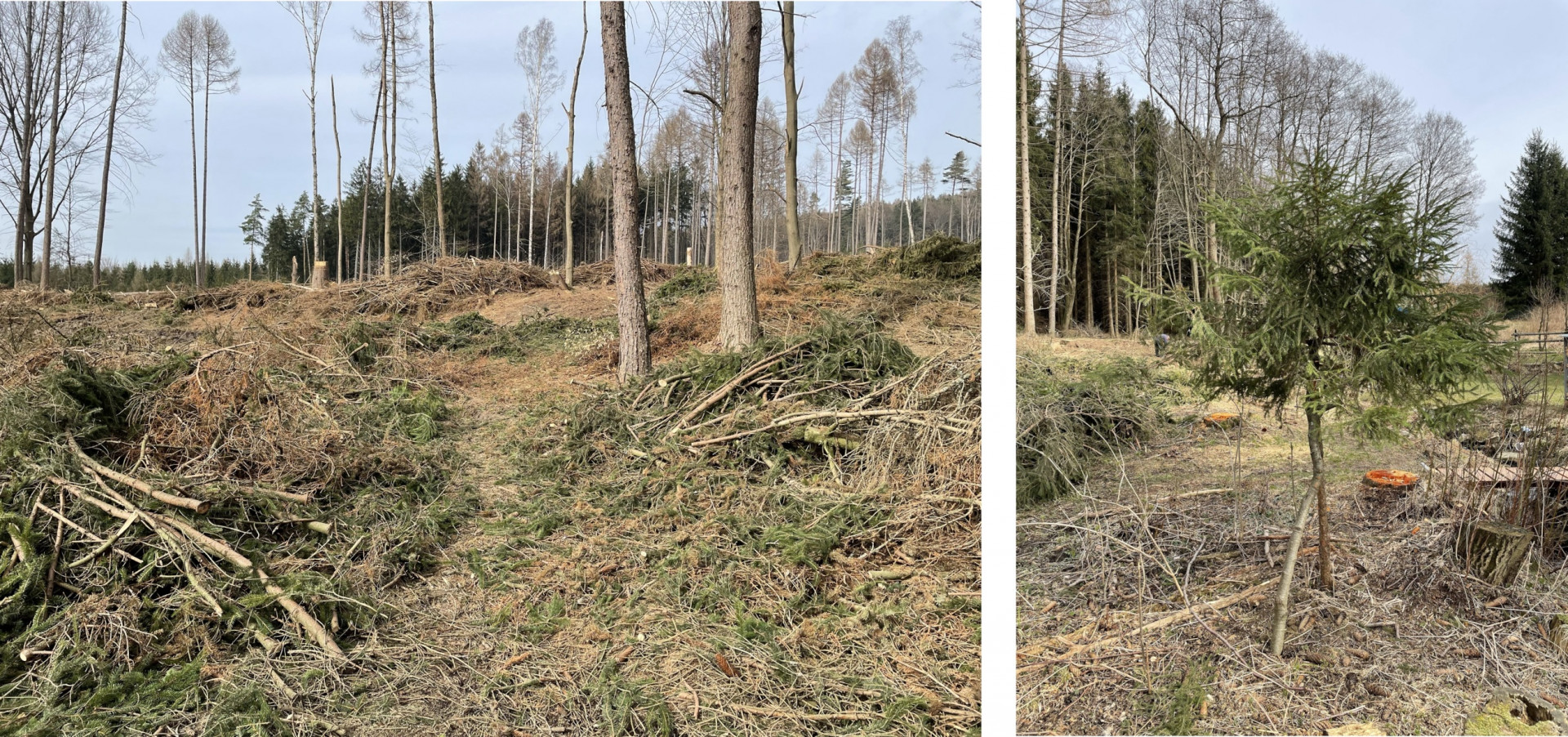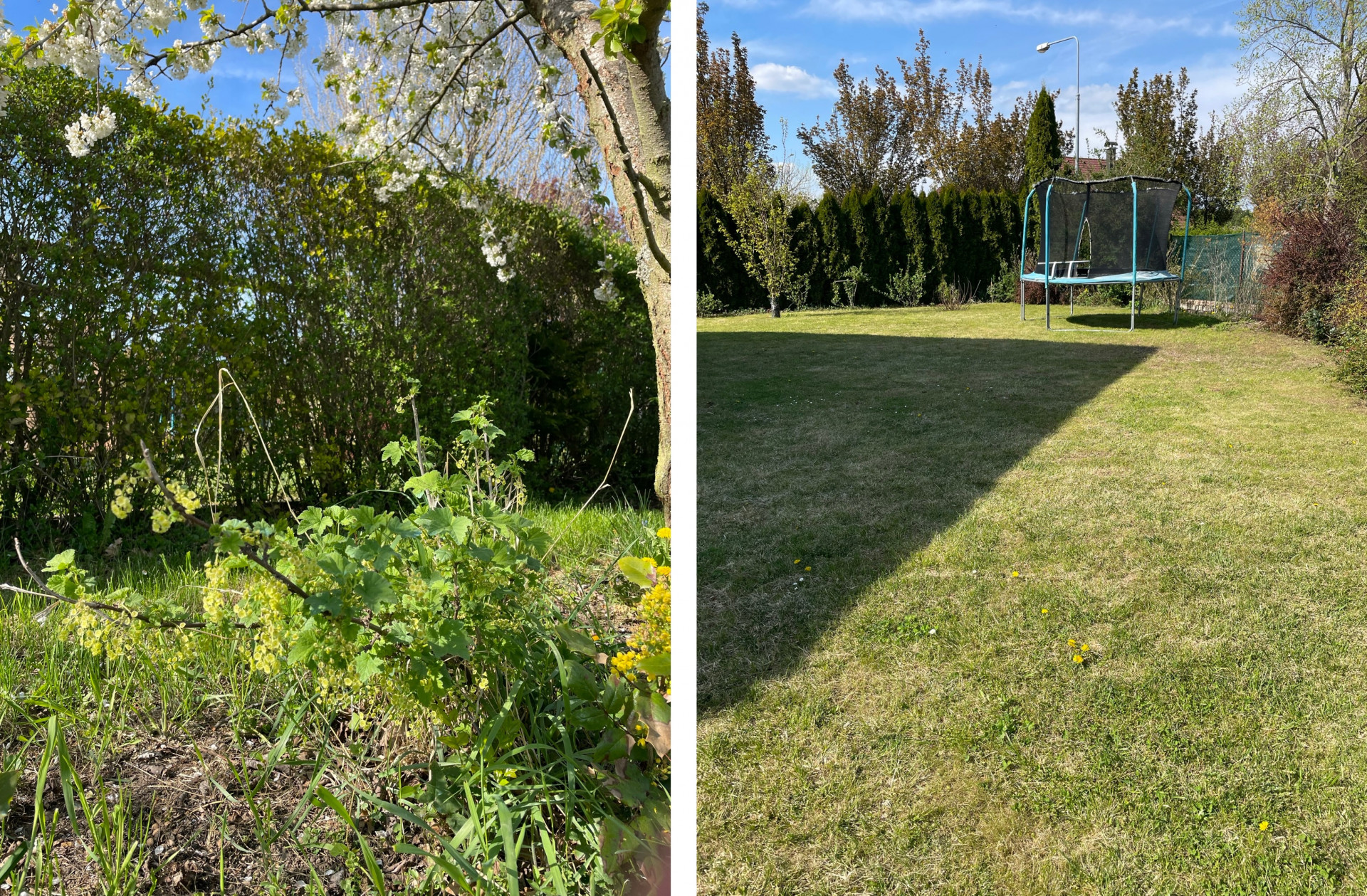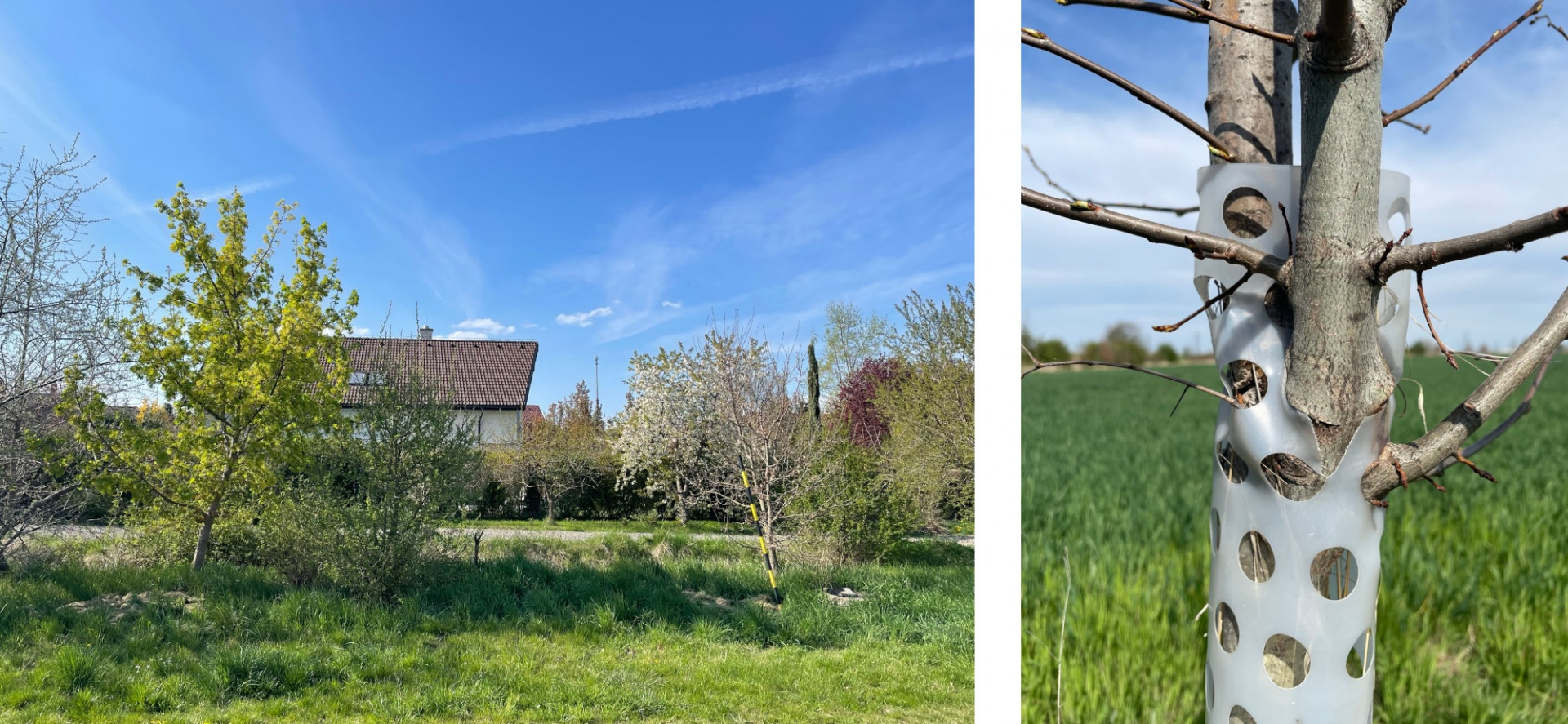Anja Decker: The space behind the garden: Inconspicuous land-related care in Czechia
When Pavel bought his cottage on the outskirts of one of Czechia’s national parks seven years ago, he was delighted to have found a weekend home that enabled him to live in close proximity to the forest. Using the back gate of his garden and crossing a small creek, it was but a few steps to a steep hill. Here, until last winter, he would find himself among established Norwegian spruce trees – one of the most common tree species planted in the country’s forests. However, the recent climate change- related succession of hot, dry summers has severely weakened Central European spruce forests and led the bark beetle, whose larvae can kill spruce, to reproduce at unprecedented rates. Felling infested and dead trees is the most commonly applied measure against bark beetle. In 2018 alone, a total area equal to 100 000 football fields of forest was destroyed.* The forest behind Pavel’s garden was no exception, and at the beginning of this year, as in many other places in the local forest, trees were cut down and the wood was transported from the area.

Before coming across Pavel for what was to become our first and only encounter, I spent several days walking through these ruins of capitalism (Tsing 2015) that many spruce forests across Czechia, Germany, Austria and other parts of Central Europe have become. On these walks, my mind was occupied with trying to come to terms with the disappearance of familiar sights and perspectives, in the face of the dead wood and bare hills that had just recently been covered with trees. However, I also found myself caught up in coping with some rather practical problems. Logging operations had modified the terrain, and the heavy vehicles transporting the wood from the area had rutted the ground. Deep, rough tracks now crisscrossed the area, rendering forest paths impassable and hard to spot or causing them to disappear altogether. Orientation was difficult and several times my routes through the forest around Pavel’s village took unexpected detours as I struggled to find the paths marked on the maps.
I met Pavel on the land behind his cottage, after having walked towards the village on a small path I was happy to have found after yet another rather rough trek across difficult terrain. “I have just cleared this path,” he yelled over from a spot at the creek. “You are the first person who gets to use it.” In the conversation that followed this somewhat proud and playful remark, Pavel told me about his initial shock and ongoing grief amid the loss of the trees, but also stressed how a conversation with the local Mayor had convinced him that felling the spruce was inevitable. However, his anger over the way the State-owned forest company handled things was still vivid. He claimed that the work had been done in a brutal, ruthless manner, lacking any sign of sensitivity. Not only had the company not spared the smaller deciduous trees, which grew among the spruce trees and which do not get affected by bark beetle, but workers had also left the path covered with large branches chopped off from the logs. Convinced that no worker would ever return to clear the path (which is marked on local maps), he decided to take his chain saw, cut the branches and remove the material from the path.
Given my own ongoing processing of the remarkable rupture climate change has imposed on a type of landscape that was so familiar to me, I could well relate to the emotions running through Pavel’s account. It is no coincidence that the topic of a lost forest is used by non-governmental organisations to campaign for transition to sustainable forestry.**

What instantly struck me, however, was the matter-of-factness with which Pavel had intervened in the material environment, subverting formal ownership rights. In the further course of our conversation, it quickly became clear that clearing the path was far from his first and only practical engagement with the land behind his garden. Pavel drew my attention to the traces of paths across the hill which he had earlier created himself and the improvised crossing over the creek he had constructed. Speaking to his neighbour, I learned that, after the trees had been felled, both had teamed up and successively cleared the whole area behind their gardens of the organic material left behind. Indeed, the terrain was littered with piles of twigs and branches, which strikingly resembled the piles which forest workers had created along the road used for transporting the logs from the forest. He also pointed to a small needle tree, growing between the tree stumps and explained how he had “rescued” this tree which the forestry workers had left lying uprooted on the ground, by supporting it with a wooden stick.
My encounter with Pavel provoked in me a fascination and subsequent search for other spaces behind the garden across types of settlements. Weeks later, this endeavour led me to a residential area in the suburban zone of Prague’s metropolitan area. Here, Jana walked me through the back gate of her garden. We first passed a strip of land stretching along her garden fence. The fruit trees and berry bushes that grew there formed a stark contrast to the short mowed lawn that dominated her private garden. Stressing that she had an informal agreement with the former Mayor to use this municipal land, Jana told me that she had established the productive plot right behind her property, to reconcile her desire to cultivate fruit with her husband’s idea of a proper garden.
We continued our walk to a wide strip of land located about 20 metres behind her property. Here Jana explained to me that, 15 years ago, she had started to add some deciduous trees to those the Municipality had previously planted there. Considering that trees grow slowly, she had wanted to create a green barrier to eventually separate her house from the nearby field, which was rumoured to be written off as building land. She regularly mowed the grass, using the cuttings to fill in the hollows in the ground. She argued that, over the years, the new layers of soil that formed through her steady efforts had already levelled many of the hollows, making it in turn easier to mow the grass.

Passing several newly planted trees, Jana indicated that the care she devoted to both pieces of land exceeded the amount of care the Municipality dedicated to the local greenery. When she reported to the Municipality that a storm had blown down many of the young oak tree saplings that had been planted recently in the very area considered for residential development, no one reacted. Instead, Jana had cared for the saplings, putting them back upright again. She also told me that she used to “free trees” in her neighbourhood, cutting off the protective grids which the Municipality would regularly fail to take down, so that they would grow into the trees’ bark. Pointing to such a tree, she commented: “The Municipality should take care of this – or ask someone to do it,” adding that she would be happy to take over this role, because caring for the trees would be good for both the trees and herself.

Much has been written about the informal usage and creation of green infrastructure. Jana and Pavel’s approaches to the land behind their gardens resemble some of the practices that have fascinated scholars for quite some time, such as guerrilla gardening (Adams/Hardman 2014, Millie 2022) and foraging (Nyman 2019, Šiftová 2020). What strikes me about them, however, is their rather practical and somewhat modest framing in both my informants’ reasoning, in contrast to the comparatively immense and instant impact their actions bring about.
Jana and Pavel speak about their work not without pride, but present their engagement as a matter of course; as unspectacular, self-initiated and immediate. The relationship of care for the land that enfolds here appears to be casual and hands-on. From the point of view of my interlocutors, the underlying rationality seems to be self-evident, in the sense that it was difficult for both to put their objectives into words, when I invited them to do so. However, their stories display notions of individual agency and indicate that their obligations to care do not end at the back gates of their properties, nor does it seem that their interventions are in need of formal authorisation. They present ad-hoc, creative reactions to their own needs and to those of (non-human) others in times of both rupture and stability, preserving given structures and living entities (like the forest paths and trees) and creating new ones (such as the green barrier and the productive garden). Jana and Pavel’s practices are informal. Nevertheless, they intertwine with formal approaches and the professional sphere. Just recall the ambiguous way in which Pavel relates his own actions to the actions of the forestry company, whose careless approach he denounces, while at the same time echoing its method of piling up branches. And think about Jana’s informal agreement to cultivate public land, and her offer to take on the care for the newly planted oak trees.
Pondering further on the practical enactments of norms of care and responsibility for land and other-than-human entities, I wonder to what extent we can read these actions as moral interventions, transporting ideas of good care, decrying neglect and ill-practice by offering practical examples of more appropriate ways of handling things. Can we understand them as not only forms of everyday world-making (Postero/Elinoff 2019), but also as inconspicuous, subtle educational projects that seek to evoke change? In other words, are they political practices that might too easily escape our sight? Interrelated with those thoughts, I wonder which role these unspectacular yet engaged practices play in regard to building individual and social resilience in the wake of pressing global issues – such as climate change and loss of biodiversity. What moral claims derive from such performances of informal care for the land one does not own? How are these claims read by other human agents? Are they recognised or contested?
To make sense of informal land-related care in Czechia, I will continue my search for spaces behind gardens, inviting those who informally care for them to walk me through the world they co-create and to share their perspectives. I am less interested in the quantitative extent of the phenomena or an essentialisation of Central Eastern European informality, than in the multitude and ambiguity of meanings it incorporates and the effects it has. Zooming in with the means of ethnography on such rather unspectacular, inconspicuous engagements with the organic and material environment enables me to attend to conflicts and alliances, as well as to identify the hidden costs that emerge from particular constellations. This approach opens up the ground to put my findings into a fruitful dialogue with my previous research on other land-related practices in Czechia, such as informal food networks and household food production (Decker 2019).
Published: 21. 6. 2022
* https://www.reuters.com/article/us-centraleurope-environment-barkbeetle-idUSKCN1S21LA
** For example, the campaign Zachraňme lesy (Let's save the forests) of the Czech branch of Friends of the Earth states, „Let's not allow the Czech forests to lose their charm or even continue to die. Join us in the protection of the future of Czech forests. https://zachranmelesy.hnutiduha.cz/cs
References:
Adams, D., & Hardman, M. (2014). Observing Guerrillas in the Wild: Reinterpreting Practices of Urban Guerrilla Gardening. Urban Studies, 51(6), 1103–1119. https://doi.org/10.1177/0042098013497410
Decker, A. (2019). A freezer full of meat: Subsistence farming in the context of social inequality. Journal for European Ethnology and Cultural Analysis, 3(2), 169-192.
Millie, A. (2022). Guerrilla gardening as normalised law-breaking: Challenges to land ownership and aesthetic order. Crime, Media, Culture. https://doi.org/10.1177/17416590221088792
Nyman, M. (2019). Food, meaning-making and ontological uncertainty: Exploring ‘urban foraging’ and productive landscapes in London. Geoforum, 99, 170–180. https://doi.org/10.1016/j.geoforum.2018.10.009
Postero, N., & Elinoff, E. (2019). Introduction: A return to politics. Anthropological Theory, 19(1), 3–28. https://doi.org/10.1177/1463499618814933
Šiftová, J. (2020). Foraging in Czechia: The nation’s precious hobby. Norsk Geografisk Tidsskrift - Norwegian Journal of Geography, 74(5), 310–320. https://doi.org/10.1080/00291951.2020.1851757
Tsing, A. L. (2015). The Mushroom at the End of the World. In The Mushroom at the End of the World. Princeton University Press.